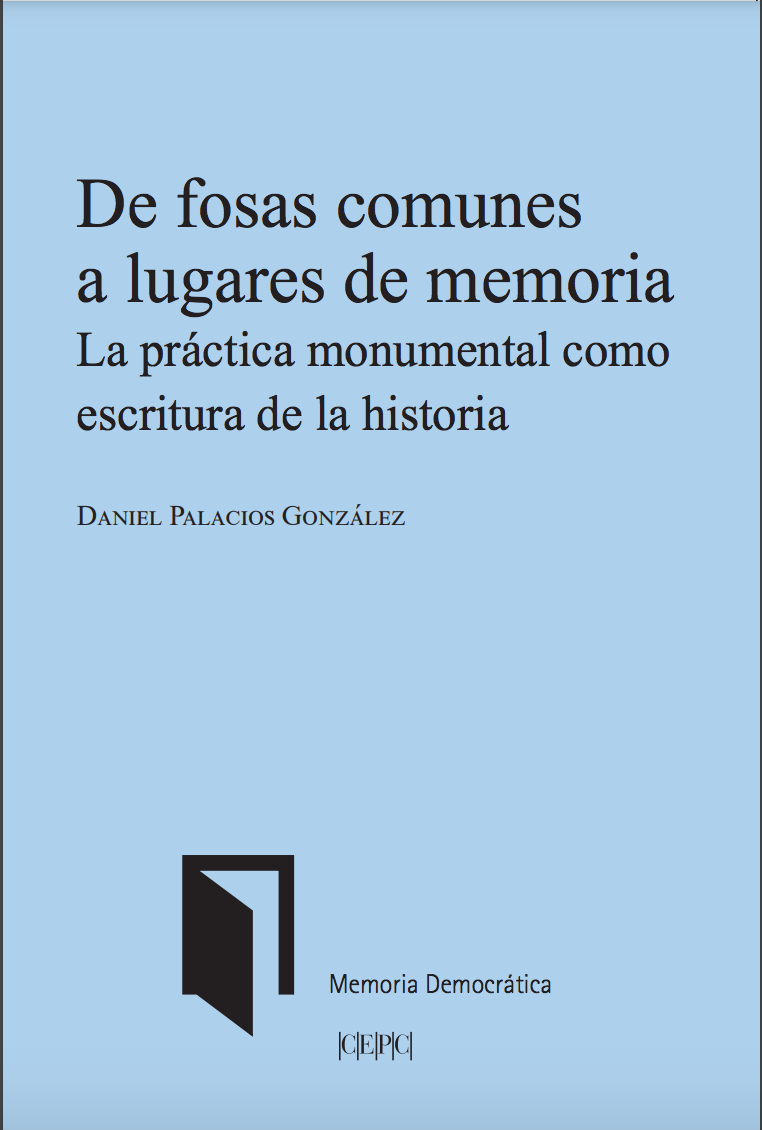The 2023 MSA First Book Award
Following our strategy of transformative inclusivity, the MSA relaunched the First Book Award. For the first time, we accepted nominations in any language. After reading and discussing the ten shortlisted books, the jury chose the winner. We are pleased to announce that this year’s award goes to Daniel Palacios González, the author of “De fosas comunes a lugares de memoria. La práctica monumental como escritura de la historia”. In his monograph, Daniel Palacios González traces the histories and meanings of mass graves of the Spanish War and Dictatorship. The reviewers praised the book for its comprehensiveness, theoretical depth, and empirical richness. They also emphasized the author’s critical approach to the ‘forensic turn’ and his precise differentiation of national and local mnemonic policies.
Honorable Mentions
Beyond choosing the winner, the jury recognized two other books with honorable mentions: Mia Martin Hobb’s monograph “Return to Vietnam: An Oral History of American and Australian Veteran’; Journeys” (2021) and Thomas Van De Putte’s “Contemporary Auschwitz/Oświęcim. An Interactional, Synchronic Approach to Collective Memory“ (2021). Congratulations!

Summary of the awarded book
Daniel Palacios González, “De fosas comunes a lugares de memoria. La práctica monumental como escritura de la historia”
In this book, the author focuses on the meaningful gestures of producing images employing the bodies buried in the mass graves of the Spanish War and Dictatorship from 1936 until today. The objective he proposed for this research was to define the historical development of monument practices and the forms they had taken, understand them in the society they seek to influence, and try to attribute a sense to them as meaningful gestures. He draws upon his own cartography of monuments in the country, with includes more that 600 records. But, far from seeking unity based on generalisations, he tries to find the logic underlying each of the experiences. For the book, the author selected a large sample of 100, and explored their specific memorial logic by visiting the sites and interviewing those involved in these practices. Additionally, he also developed observation and participant observation in different memorial rituals and events.
The text is organized into three parts, each covering a stage of the analysis. In the first part, the author answers the question of how the production of monuments evolved over time and what forms they took. In the second part, the question of how monument practices were incorporated into the society they sought to influence is explored. In the third part, the author points out how we are not dealing with simple reactions that respond to the formal logic of tradition, but, on the contrary, they look for a specific and rational end goal, a result based on planning and the will to promote critical historical consciousness. As a conclusion, the book proves how the monument becomes an expression of the historical consciousness of its producers. How different actors communicated their memories in a meaningful gesture limited by the material reality integrating the bodies in the construction of a new image of the past. And how they seek to impact and transform society, beyond the basic human need of burying the dead according to a long standing funerary tradition.
Daniel Palacios, De fosas comunes a lugares de memoria. La práctica monumental como escritura de la historia. Spanish 2022, Centro de Estudios Políticos y Constitucionales, 978-84-259-1959-6, pp. 389.



